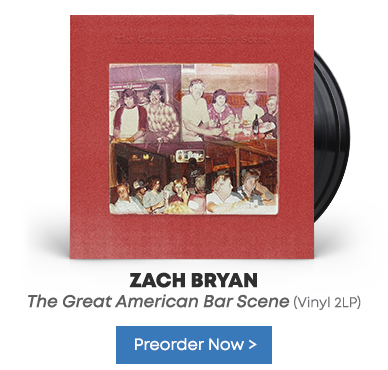Fifty years ago, the Summer of Love approached its twilight. While another month would pass before a mock funeral was staged in early October of 1967 in San Francisco to lament the "death of the hippie," what had been a brief respite from the social unrest of the late 60s soon again gave way to reality. Throughout the summer of 1967, San Francisco's Haight-Ashbury neighborhood became a mecca for youth culture. Indeed, many visitors who made the trek to Northern California celebrated at June's Monterey Pop Festival. Ground zero for the hippie movement, the Summer of Love wasn't overtly political in nature, but it did extol the period's Civil Rights and feminist movements. Throughout those memorable months, the focus remained on community and song. To mark the anniversary, we look back on five key artists that helped make the Summer of Love.
The Mamas and the Papas
While the song predated the Summer of Love by nearly two years, the Mamas and the Papas' "California Dreamin'" became one of the first major hits to capture the reverie-like nature of kaleidoscope pop. Optimistic, yet full of longing, the song's evocative imagery – the leaves of the fall, the loneliness of a nearly empty church – comes on against melancholic albeit high-pitched guitars and gusty, call-and-response vocals. That the Mamas and the Papas closed Monterey Pop was no accident. Bandleader John Phillips and his manager, Alan Pariser, worked closely with producer/executive Lou Adler to create the event. At the concert, the Mamas and the Papas were joined by Scott McKenzie, who sang his Phillips-penned "San Francisco (Be Sure to Wear Flowers in Your Hair)," a casually paced strummer that painted the city as a utopia free from the other troubles of the age.
Big Brother & the Holding Company
Loud, and a little out there, Big Brother & the Holding Company had been making a name for itself in the San Francisco underground for its heady take on the blues – hard, and slightly intellectualized, courtesy of jazz-like rhythmic approach. One problem: The band didn't really have a lead singer. Enter Janis Joplin, who relocated from Texas to audition and become the group's focal point. With Joplin at the helm, Big Brother & the Holding Company smoothed out some of its progressive and jam-band-like touches, finding ways to wrap fiery guitar workouts and groove-laden detours around her vocals. A master of her domain, Joplin could saunter down low one moment and then let her untamed voice loose until she seemingly wrestled control of it. The band turned in a breakout performance at Monterey Pop. The turn showcased Joplin's ability to marry the blues and rock n' roll – and resulted in a sound best described as unfettered primal intensity. A deal with Columbia Records and nation-wide acclaim soon followed.
The Beatles
What hasn't already been said about the Beatles' Sgt. Pepper's Lonely Hearts Club Band, which received the reissue and remix treatment earlier this year? Not much, but no discussion of the Summer of Love is complete without mentioning it. Many Summer of Love anniversary events were staged this summer around the re-release, and the feel-good, heavily orchestrated work will forever be associated with 1967's sound and mindset. Examples abound. The Ringo Starr-led "With a Little Help from My Friends" features a hokey yet charming message, one that sways with a gentle rhythmic march, while the toy-like organ running through "Lucy In the Sky with Diamonds" seems built for blissed-out afternoons in the sun – not to mention the song's nod to the drugs of the era. And then there's "She's Leaving Home," a number with a classically refined feel and narrative inspired by a British newspaper story. It also doubtlessly tapped into the anxieties of many parents who saw a loved one make the pilgrimage to San Francisco.
The Byrds
Even as the Byrds' entry into psychedelia arrived two years earlier in the form of "Eight Miles High," the band's 1967 set Younger Than Yesterday goes into full-on out-of-this-world mode, bringing all sorts of weirdness and colorful accoutrements to songs that manage to stay grounded in rootsy traditionalism. Today, the album-opening "So You Want to Be a Rock ‘n' Roll Star" may be remembered more for its cynicism and steady drive – or the fact Tom Petty turned it into a blistering cover song. But to go back to the source is to discover a work full of beautiful, what-were-they-thinking moments. Whether via the underlying clicks and clacks, wailing teenage vocals, or Western-influenced trumpet, the tune heralds an album where all the expected sounds get ever so slightly twisted. Check "CTA-102," a space-race rocker consumed by alien-like distress calls and backward-sounding tapes. Or seek out "Mind Gardens," which feels lost in time and loads up on Eastern mysticism. Consider it the sonic embodiment of what Timothy Leary meant when he said, "turn on, tune in, drop out" in San Francisco earlier in the year.
The Jimi Hendrix Experience
Rock n' roll doesn't get much wilder or bigger in scope than what Jimi Hendrix brought to Monterey Pop. Whereas many of the day's stars used the guitar to riff or lead or provide fanciful solos, Hendrix wielded it like a magician, twisting its knobs and bars to make it appear as if sounds were being bent or tweaked in mid-air. Like light being filtered through a crystal, when Hendrix touched his strings, it was never quite clear which way the music would venture. And who can forget the grand finale of his set, during which he lit his guitar on fire and smashed it. Released earlier in 1967, Are You Experienced? captured the summer's sense of experimentation and tapped into a feeling of unease that permeated the latter third of the decade. To hear these characteristics, just cue up the haunting stop-and-start ballad "The Wind Cries Mary" or give yourself to the sexual tension and desperation of "Foxey Lady."
1st Sep 2017




































